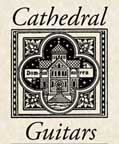|
|
1. Introduction
We are all heirs to the Segovian view of what constitutes a classical
guitar, viz., a six-stringed instrument, tuned in E and of relatively
large-scale length at least 65cm. Guitars have not always
been in this form. In the Renaissance, they were smaller and
had four courses, in the Baroque, five, and in the late eighteenth
and early nineteenth century began to emerge in six string form.
Thus, change in the number of strings has covered a period of
perhaps two hundred and fifty to three hundred years. This can
be contrasted with what happened to the lute over the period
1500 to 1650, say. Starting from a five course lute in late Medieval
times, it had six courses in the earlier half of the sixteenth
century, seven and eight were common by the end of this century,
with nine and ten following on rapidly, and by the mid-seventeenth
century eleven and thirteen courses were used by the serious
player. Thus, the lute expanded its courses by a factor of about
two, in about half the time it took the guitar to reach its currently
common format. The reasons for this probably lie in the usages
of the two instruments, the lute was used for 'art' music and
was expected to perform the elements of polyphony and complex
harmonic structures, whereas the guitar, although having some
complex music composed for it even in its four-course form, had
a long history as an instrument for strumming, that is, simple
song-accompaniment or as part of the rhythm section of an ensemble.
In its current six-string form, there has been, without question,
much fine music written and adapted for it, especially in the
last century. While all instruments are of limited compass, the
guitar with its accessible range of just over three octaves,
quickly reveals its limitations when trying to adapt pieces written
for keyboard or ensemble. The problem reveals itself in two ways.
Given that the guitar plays an octave lower than seemingly indicated
by its treble clef, endeavouring to play a keyboard piece (for
example) shows that while one expects to find the notes from
the treble clef on the guitar, notes from the bass clef can only
be accommodated in correct octave relation down to E (second
space down), or D (middle line) if bass D tuning is envisaged.
Lower re-tunings do not usually help as the sixth string becomes
too flexible, and higher bass notes are often awkwardly fingered.
If the piece is of a suitable 'character' for guitar, key transposition
may help. In the course of the arrangement, one is also likely
to find that the top and bottom notes certainly exist on a guitar,
but it is not possible to 'stretch' the left-hand to play them,
or fret them in conjunction with other required notes. One is
therefore required to delete or 'jump octaves' to make the chord
or sequence playable.
Nevertheless, it is often truly impressive as to what a skilled
arranger can achieve, witness Scarlatti sonatas and many works
by Granados and Albeniz. I am sure you can all think of many
other examples. The problems can be addressed by a group of guitars,
ranging from a duo of tenor guitars, to ensembles using the full
guitar family from bass to octave. However, this option is not
open to the solo player and most of us are solo players,
though perhaps not soloists! While the idea of limitation has
been introduced by the problem of arrangement, there is clearly
an opportunity for enhanced musical expression if the guitar
adopts a similar strategy to that taken by the lute many centuries
ago. It is the purpose of this article to explore the possibilities
and associated issues. Before starting, I am sure many readers
will already be thinking something along the lines: "Surely
it is well-known that multi-string guitars (that is, guitars
with more than six strings) suffer from a problem of excessive
sympathetic resonance / over-ringing that constitutes a serious
barrier to effective performance?". It is certainly true
that some ten-string instruments introduced in the 1960's did
suffer from this problem. My impression is that changes in construction
over the last twenty years have considerably reduced this tendency.
Note, all experienced players have to address this problem even
with six strings. In the case of additional bass strings, similar
techniques apply to those already used for six, and, in any event,
where general resonance does start, a passing light touch with
a convenient part of the right hand is all that is required to
bring matters under control. In my experience, sympathetic resonance
is NOT a major issue. As I hope to show, the advantages of multi-string
guitars are so considerable that concern over this issue is misplaced.
The article will start by describing traditional multi-string
guitars and some current developments, move on to learning to
play, strings, and close by discussing repertoire.
NEXT | 1. Intro | 2. Guitar
Types | 3. Strings | 4. Learning | 5. Repertoire
| 6. Conclusion
|
